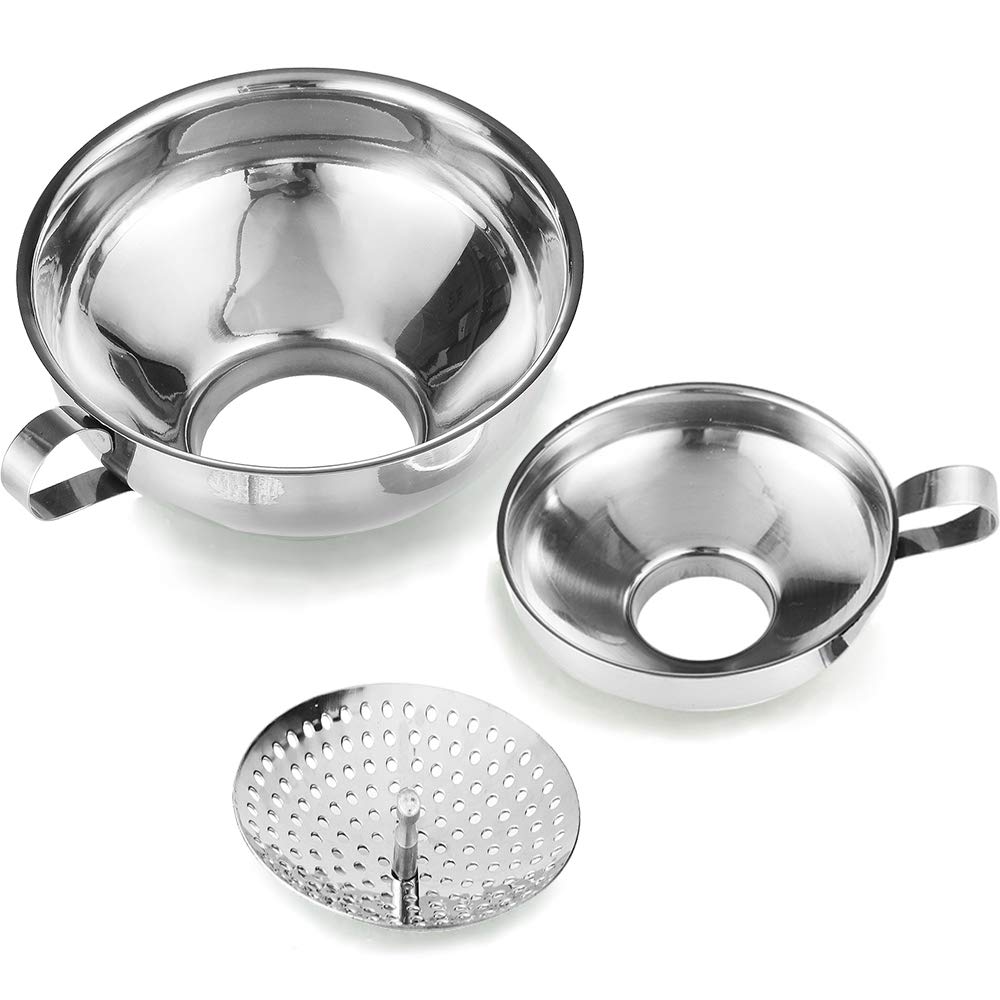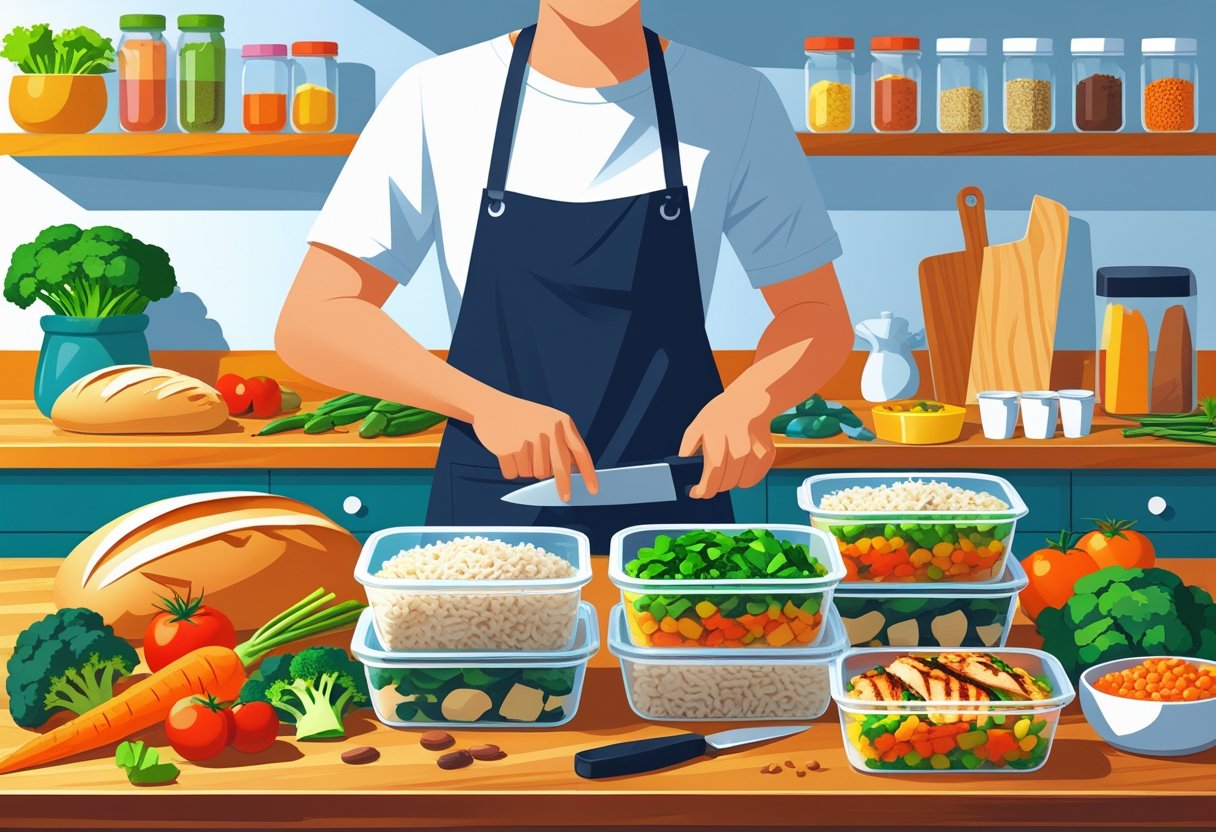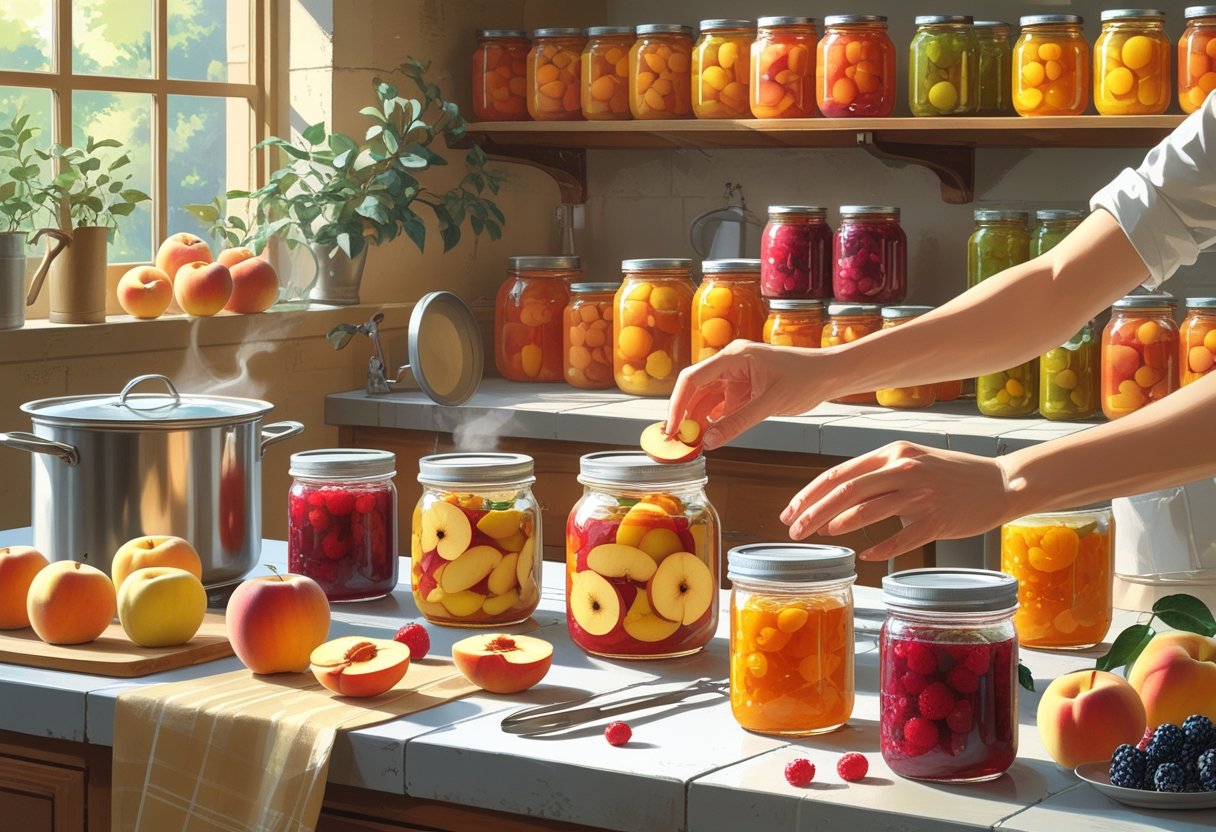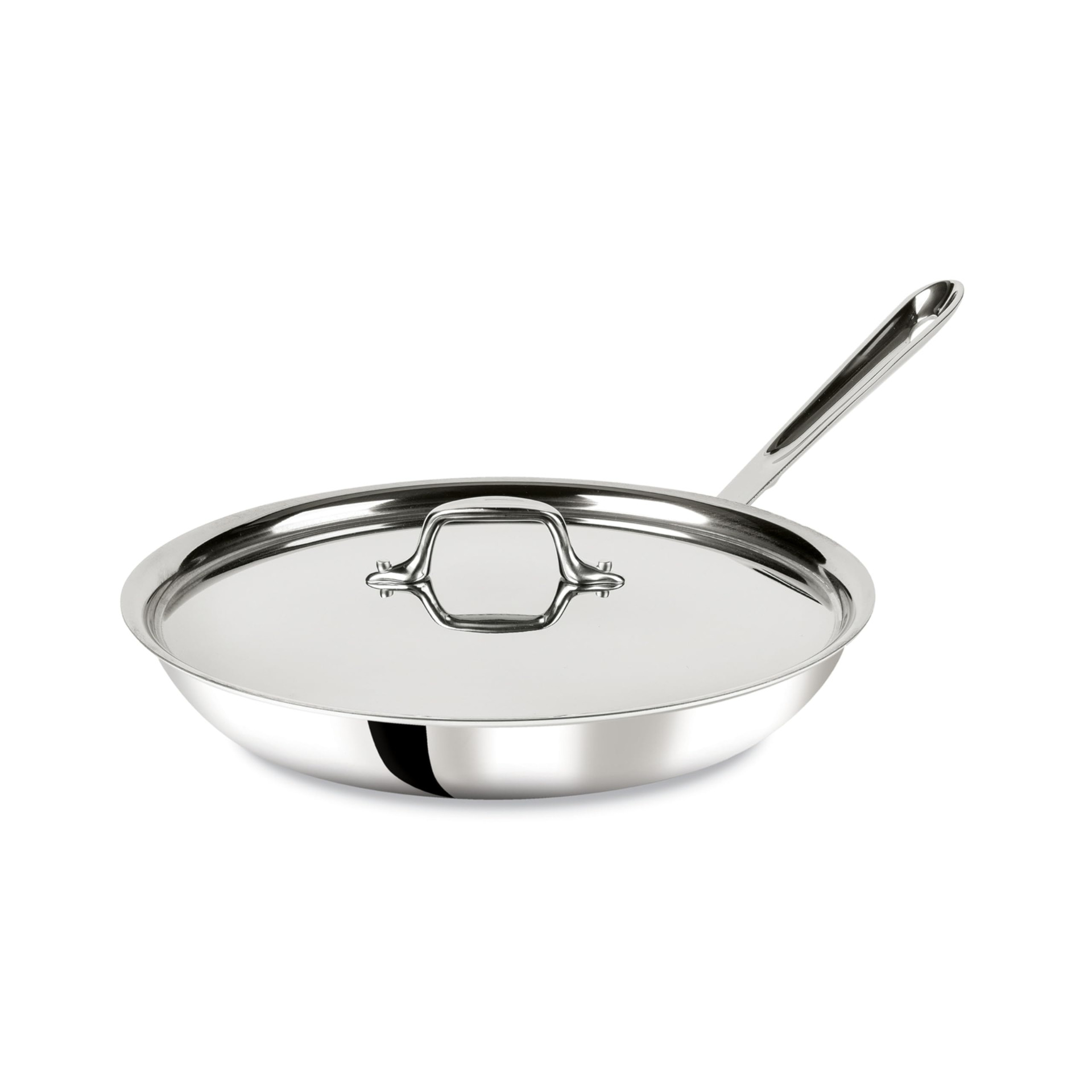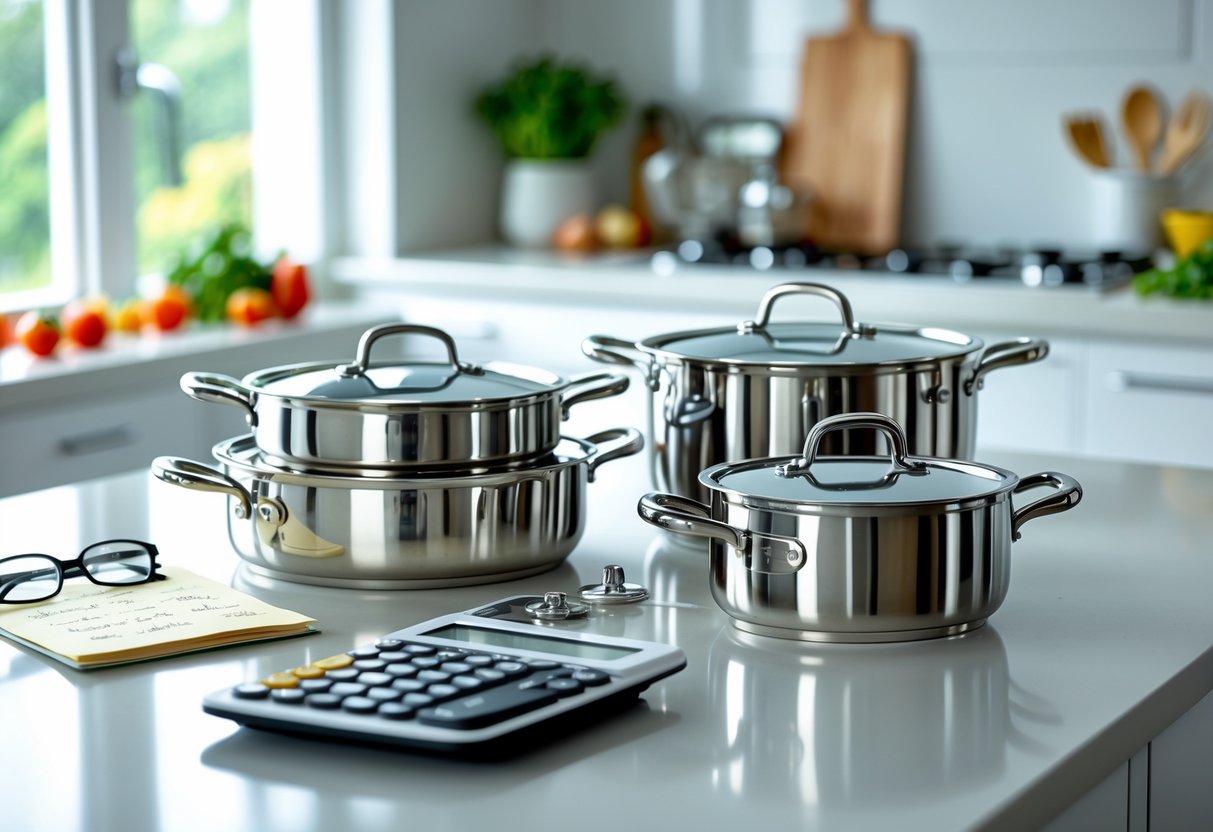Food waste eats away at most household budgets, yet a few tweaks in the kitchen can slash both waste and grocery bills. The average family tosses out hundreds of dollars in food each year—kind of painful when you think about it.
Refill & Reuse: 7 Frugal Kitchen Habits That Cut Food Waste & Save Money for Sustainable Home Cooking
Food waste eats away at most household budgets, yet a few tweaks
in the kitchen can slash both waste and grocery bills. The average
family tosses out hundreds of dollars in food each year—kind of painful
when you think about it.

Smart kitchen practices—think planning, storing food right, and getting creative with leftovers—can cut food waste by up to 50% and shrink your monthly grocery bill at the same time. These habits don't require much effort, but they make a surprising difference through better meal planning and making the most of every ingredient.
1) Plan meals weekly to avoid overbuying
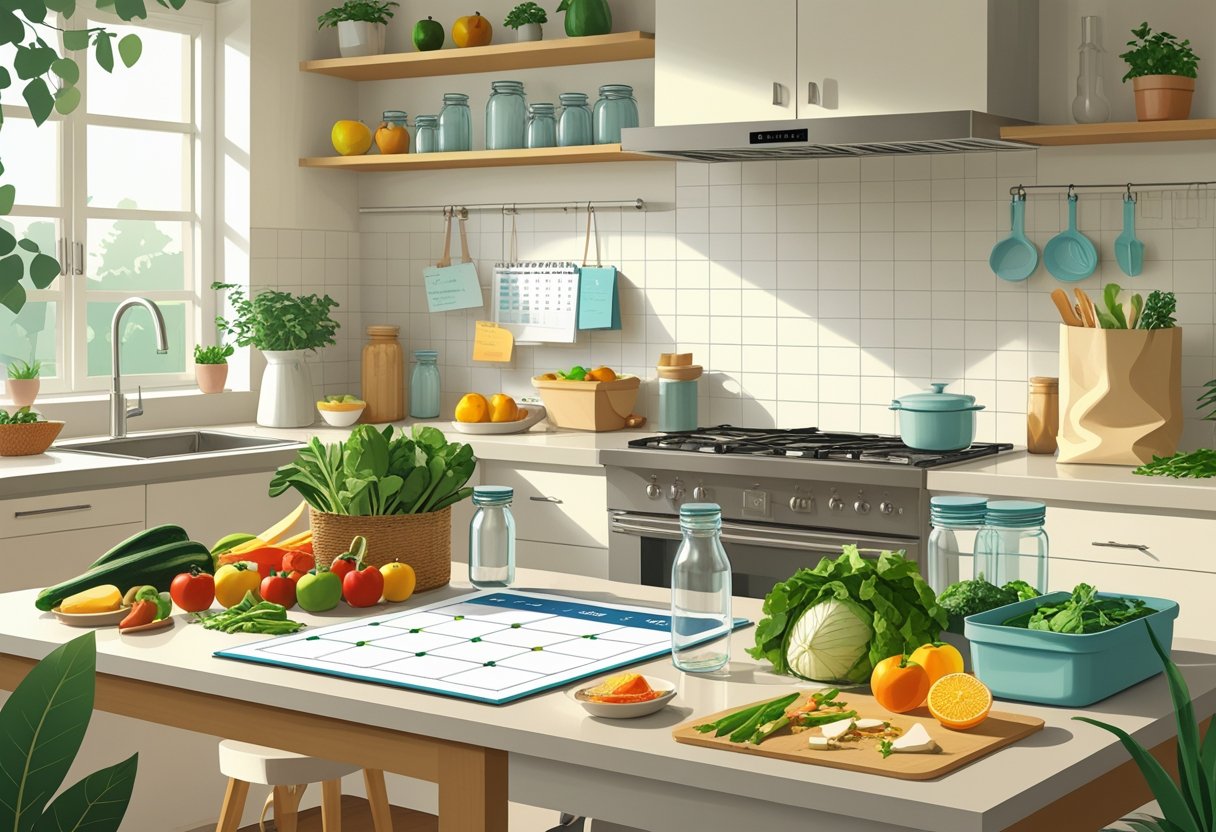
Weekly meal planning helps curb those impulse buys and keeps food waste in check. When you map out meals in advance, you only grab what you need for those specific recipes.
Meal planning can help dodge last-minute takeout and random grocery grabs. It gives you a clear game plan for the week, so you're not left guessing at the store.
Smart planners look at how many meals will actually happen at home before shopping. They think about restaurant nights, work lunches, or family events to figure out what groceries they really need.
Your meal plan doesn't have to be fancy. Some folks love apps, but plenty stick with good old pen and paper—whatever keeps you on track.
Making a shopping list based on your weekly meals saves money and time. It stops you from buying duplicates or random ingredients that end up forgotten.
Always check your pantry and fridge before making your plan. You might already have half the stuff you need, and using it up means less goes to waste.
2) Use a grocery list and stick to it strictly

Shopping with a list (and not straying from it) keeps impulse buys at bay, which means less food sits around and spoils. Unplanned items usually go bad before you even remember you bought them.
A solid grocery list keeps you focused on meals you actually plan to make. That way, you're less likely to buy stuff you don't need (or already have at home).
Reusable grocery lists for your regular staples can save time and money. Just build your list around the basics you always use.
Before you shop, check what's already in your pantry and fridge. Then, make your list based on what you're cooking that week.
Sticking to your list takes some willpower. If you start grabbing extras, you'll probably end up with more food than you can use, and some of it will go bad.
It's all about being mindful. When you only buy what's on your list, you waste less and your grocery budget stretches further.
3) Batch-cook meals and freeze portions
Batch cooking and freezing meals totally changes the game for kitchen efficiency and food waste. Make big batches, then stash away portions for busy days.
Buying in bulk usually costs less than picking up small amounts for each meal. Cooking larger quantities means you use up all your ingredients before they spoil.
Small households can freeze meals in single or double portions. That way, leftovers don't just sit and rot, and you don't have to start from scratch every night.
Soups, stews, casseroles, and cooked grains all freeze like champs. They hold up well when you thaw and reheat them.
Batch cooking cuts down on dinner stress and dishes during the week. You're less tempted by takeout when there's something homemade in the freezer.
Label your freezer containers with what's inside and the date. Most cooked meals stay good for three to six months if you store them right.
4) Repurpose leftovers into new dishes
Turning leftovers into new dishes keeps things interesting and helps you waste less. It takes a bit of creativity, but the savings add up.
Leftover roast chicken? Toss it into chicken salad, soup, or stuff it in a quesadilla. Rice can become fried rice, stuffed peppers, or even rice pudding if you're feeling adventurous.
Vegetable leftovers open up lots of options—think soups, frittatas, or pasta toss-ins. Roasted veggies blend into sauces or work as pizza toppings too.
Bread that's a little stale? Make French toast, breadcrumbs, or croutons. Old tortillas crisp up nicely into homemade chips with a little oil and salt.
Pasta leftovers don't have to be boring. Try them cold in salads, baked into casseroles, or stirred into soup. Add fresh herbs or a new sauce for a totally different vibe.
Getting creative with leftovers saves cash and cuts waste. Honestly, it's all about seeing yesterday's dinner as ingredients for today's meal, not just reheating the same thing.
It helps to keep basic pantry staples like broths, spices, and sauces on hand. That way, you can whip up something new with whatever's left in the fridge.
5) Store produce properly to extend shelf life
Storing fruits and veggies the right way can stretch their shelf life by days, sometimes weeks. Every type of produce has its own quirks when it comes to staying fresh.
Keep berries dry and in containers lined with paper towels. Too much moisture is basically an invitation for mold.
Potatoes, onions, and garlic like cool, dark spots with airflow. Don't stick them in the fridge—the cold messes with their texture and taste.
Leafy greens last longer when you wrap them in damp paper towels and pop them in perforated bags. You want some humidity, but not enough to make them soggy.
Humidity matters, too. Most veggies like it humid, but apples and citrus are happier with a bit less.
Keep ethylene-producing fruits like bananas and apples away from ethylene-sensitive veggies. That gas makes things ripen—and rot—faster than you'd expect.
Check your produce often and pull out anything starting to go bad. One rotten apple really can spoil the bunch, unfortunately.
6) Utilize vegetable scraps for stocks and broths
Don't toss those onion skins, carrot peels, or celery leaves—use them for homemade stock. Most people just throw these scraps out, but they're packed with flavor.
Onion skins, carrot peels, celery leaves, and herb stems all add depth to broth. Potato peels and broccoli stems work, too—you'd be surprised.
Collect scraps in a freezer bag as you cook. When you've got enough, it's time to make some stock.
Just simmer the scraps with water for 30 to 60 minutes. Toss in some salt, pepper, maybe a bay leaf, and you're set.
Homemade stock costs next to nothing since you're using things you'd throw away anyway. You'll save money, and the flavor beats anything from a box.
Use your stock in soups, stews, rice, or sauces. Making broth from scraps gives you both financial savings and less kitchen waste.
Your finished stock keeps in the fridge for about five days, or you can freeze it for months. Handy to have on hand, honestly.
7) First in, first out: rotate pantry items regularly
The FIFO method stands for "First In, First Out". It's a basic but surprisingly effective way to manage what you've got in your kitchen.
Using FIFO means you grab older pantry items before reaching for the new stuff. That way, nothing gets left behind to gather dust (or worse, go bad).
When you unload groceries, just tuck the new boxes and cans behind what's already there. It's a tiny habit, but it nudges you to use up older goods first.
FIFO helps reduce waste and maintain ingredient freshness. It especially shines with canned goods, pasta, rice, and anything that hangs out on the shelf for a while.
Rotating things regularly keeps food spoilage at bay and saves you a few bucks. Honestly, you'll probably find stuff you forgot you bought hiding in the back.
It doesn't take much effort, but the payoff is real. Just shuffle those older items to the front each time you shop and you'll get a nice rotation going.
Understanding the Environmental Impact of Food Waste
Food waste does a number on the environment, mostly through greenhouse gas emissions and resource depletion. American households lose a surprising amount of money each year by tossing food that took water, energy, and land to grow.
How Food Waste Contributes to Climate Change
Food waste actually tops the list of stuff Americans toss in landfills. Over one-third of food produced in the United States never gets eaten, which is wild when you think about it.
When food breaks down in landfills, it releases methane. That's a greenhouse gas that traps heat way more efficiently than carbon dioxide—25 times more, if you're counting.
Key Environmental Impacts:
- Wasted water resources used for irrigation
- Unnecessary pesticide and fertilizer application
- Energy consumption during food production and transport
- Soil degradation from agricultural expansion
Food waste comprises 24 percent of all landfilled municipal solid waste. It also accounts for 22 percent of materials sent to incinerators nationwide.
Producing food that gets tossed takes up a staggering amount of resources. Farmers end up using about 21 percent of freshwater on crops that never even make it to someone's plate. That's a huge deal, especially where water's already scarce.
Financial Implications of Wasted Food in Households
American families dump billions of pounds of edible food every year. The United States wastes 92 billion pounds of food annually, with almost half occurring in homes.
Average Household Food Waste Costs:
- $1,500 per family annually
- $130 per person monthly
- 30-40% of purchased groceries
When you buy food that spoils before you eat it, you're basically tossing money out with the trash. Fresh produce is usually the first to go, then dairy, and then those leftover meals that seemed like a good idea at the time.
Food represents one of the highest expenses most households face. Overbuying perishable stuff is a classic mistake that leads to waste.
Common Waste Patterns:
- Buying bulk quantities that exceed consumption needs
- Forgetting about items stored in refrigerators
- Misunderstanding expiration date meanings
- Preparing oversized portions
Getting a handle on kitchen management can lower your environmental impact and your grocery bills. With less waste, you could put that extra cash toward something you actually want—maybe even something fun for a change.
Implementing Sustainable Practices Beyond the Kitchen
Cutting food waste isn't just about what happens in your kitchen. Composting and community programs can turn scraps into something useful and even help you connect with neighbors who care about the same stuff.
Composting as a Solution for Food Scraps
Composting turns kitchen scraps into nutrient-rich soil, and it keeps methane out of landfills. If you've got veggie peels, coffee grounds, eggshells, or fruit cores, you can turn them into compost in about 3-6 months.
Hot composting needs a 3:1 mix of browns (like leaves or paper) to greens (food scraps, grass clippings). If you get it right, the pile heats up to 130-160°F and you'll see finished compost in 2-3 months.
Cold composting just means piling stuff up without worrying about temperature. It's slower—6-12 months—but it's pretty hands-off except for a little turning now and then.
If you live in an apartment, vermicomposting bins with red wiggler worms are a game-changer. These little guys handle about a pound of food scraps a week in a pretty small space.
Indoor composting units (like those electric ones) can shrink your food scraps by 80% in a day. They're not cheap—usually $300-600—but they cut down on smells and you won't have to deal with critters.
Some neighborhoods offer community composting drop-offs. You bring your scraps, and later you might get some compost back for your garden. Not bad for something you'd just throw away otherwise.
Community Initiatives for Reducing Food Waste
Food recovery programs take surplus food from restaurants and grocery stores and bring it to food banks or shelters. Volunteers pick up items that are close to their expiration dates but still perfectly good to eat.
Neighborhood sharing networks help people share extra produce from backyard gardens or bulk buys. Apps like Olio, and sometimes just local Facebook groups, make it surprisingly easy to swap food with neighbors nearby.
Community fridges sit in public spaces and let anyone donate or take food, no questions asked. You'll spot these fridges in parks, community centers, and even at some bus or train stations in big cities.
Gleaning programs send volunteers out to harvest crops that farmers can't sell, maybe because they're a little odd-looking or there's just too much. Usually, the volunteers keep about 20% of what they pick and donate the rest.
Local composting cooperatives let neighbors team up for bigger composting projects than anyone could handle alone. People pitch in their food scraps and some elbow grease, then split the finished compost and share the costs.
School garden programs show kids how to grow food and talk about sustainable kitchen practices. These hands-on lessons make the idea of reducing food waste a little more real for them.
Home food preservation's gotten more popular as folks look for ways to cut waste and save cash at the grocery store. Canning lets you stretch the shelf life of seasonal produce, whip up homemade gifts, and stay in control of what goes into your preserved foods.
Feeding yourself well on just $20 a week sounds impossible, right? But honestly, with some planning and a bit of strategy, it's totally doable—even if you're skeptical at first.
Learning to preserve fruit can transform a seasonal glut into year-round savings. It also helps cut household food waste—something that always feels good.
Stainless steel cookware forms the backbone of professional kitchens and serious home setups. Unlike nonstick pans that need replacing every few years, a good stainless steel pan can stick around for decades—if you treat it right.
Stainless steel cookware can save you a surprising amount of money over time if you treat it right. It lasts for decades, so you can finally stop tossing pans every few years like so many of us do.

